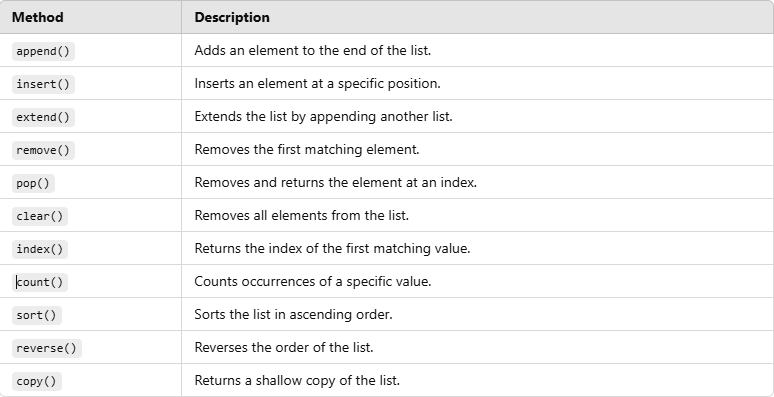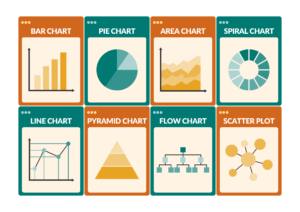Python Lists
Python is a versatile programming language, and one of its most powerful features is the list. Lists in Python are dynamic, mutable, and can hold a collection of items, making them essential for developers and data scientists alike. This blog will explore Python lists in-depth with examples.
What is a Python List?
A list is a built-in data structure in Python that allows you to store multiple items in a single variable. Lists can contain elements of different data types, including integers, floats, strings, and even other lists.
Syntax
list_name = [element1, element2, element3]
Example
my_list = [1, 2, 3, "Python", 4.5]
print(my_list) # Output: [1, 2, 3, 'Python', 4.5]
Key Features of Lists
Ordered: The elements in a list have a defined order.
Indexed: You can access elements using an index.
Mutable: Lists can be modified after their creation.
Dynamic: They can grow or shrink in size.
List Operations
1. Creating a List
You can create an empty list or a list with elements.
# Empty list
empty_list = []
# List with elements
numbers = [1, 2, 3, 4, 5]
2. Accessing Elements
Access elements using their index.
fruits = ["apple", "banana", "cherry"]
print(fruits[0]) # Output: apple
print(fruits[-1]) # Output: cherry (negative index starts from the end)
3. Modifying Elements
You can change the value of a specific element.
fruits[1] = "blueberry"
print(fruits) # Output: ['apple', 'blueberry', 'cherry']
4. Adding Elements
append(): Add a single element at the end.insert(): Add an element at a specific position.extend(): Add multiple elements to the end.
# Append
numbers.append(6)
print(numbers) # Output: [1, 2, 3, 4, 5, 6]
# Insert
numbers.insert(2, 99)
print(numbers) # Output: [1, 2, 99, 3, 4, 5, 6]
# Extend
numbers.extend([7, 8, 9])
print(numbers) # Output: [1, 2, 99, 3, 4, 5, 6, 7, 8, 9]
5. Removing Elements
remove(): Remove the first occurrence of a value.pop(): Remove an element by index (or the last element if no index is specified).clear(): Remove all elements.
# Remove
numbers.remove(99)
print(numbers) # Output: [1, 2, 3, 4, 5, 6, 7, 8, 9]
# Pop
numbers.pop(3)
print(numbers) # Output: [1, 2, 3, 5, 6, 7, 8, 9]
# Clear
numbers.clear()
print(numbers) # Output: []
6. Slicing
Retrieve a subset of elements using slicing.
letters = ["a", "b", "c", "d", "e"]
print(letters[1:4]) # Output: ['b', 'c', 'd']
print(letters[:3]) # Output: ['a', 'b', 'c']
print(letters[2:]) # Output: ['c', 'd', 'e']
7. Iterating Over a List
Use loops to iterate through the elements of a list.
# Using for loop
for letter in letters:
print(letter)
# Using while loop
index = 0
while index < len(letters):
print(letters[index])
index += 1
List Methods

Example
numbers = [3, 1, 4, 1, 5, 9]
numbers.sort()
print(numbers) # Output: [1, 1, 3, 4, 5, 9]
numbers.reverse()
print(numbers) # Output: [9, 5, 4, 3, 1, 1]
Nested Lists
Lists can contain other lists as elements, creating a nested structure.
matrix = [
[1, 2, 3],
[4, 5, 6],
[7, 8, 9]
]
# Accessing nested elements
print(matrix[1][2]) # Output: 6
List Comprehensions
List comprehensions provide a concise way to create lists.
# Example: Create a list of squares
squares = [x**2 for x in range(10)]
print(squares) # Output: [0, 1, 4, 9, 16, 25, 36, 49, 64, 81]
# Filtering
even_squares = [x**2 for x in range(10) if x % 2 == 0]
print(even_squares) # Output: [0, 4, 16, 36, 64]




